If you’ve ever wondered what a covid-19 vaccine looks like outside of its syringe, you can check out what it looks like in glass.
Artist Luke Jerram unveiled his glass sculpture of the Oxford/AstraZeneca vaccine in Bristol earlier this month to commemorate the vaccination of 10 million people in the United Kingdom. The Oxford/AstraZeneca vaccine is one of three vaccines currently approved for use in the country.
According to Jerram, the artwork is about 34 centimetres wide and is roughly the size of a soccer ball. The artist explains that his sculpture is one million times larger than the actual vaccine nanoparticle.
Motivated by Personal Experience With Covid-19
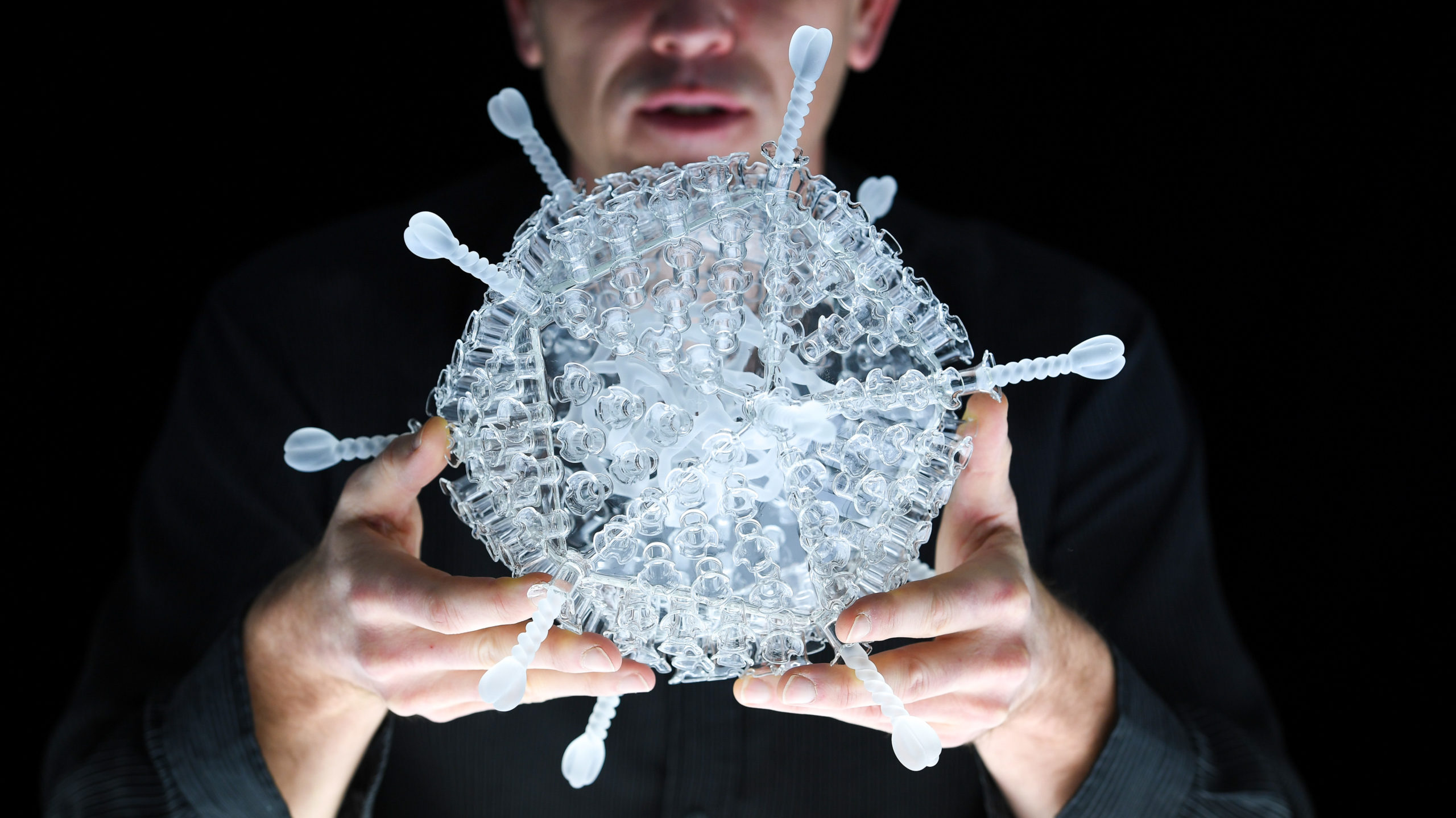
Speaking to the BBC’s Front Row, Jerram said he was motivated to make the sculpture after getting covid-19 in November. The artist revealed that he still does not have a proper sense of smell because of the disease and that his ears ring with tinnitus.
“During my recovery, it became clear to me that my next artwork should focus on the vaccine, our way out of this global crisis, as a tribute to the scientists and medical teams who have been working collaboratively across the world to fight the virus,” Jerram said in a statement.
Making the Sculpture
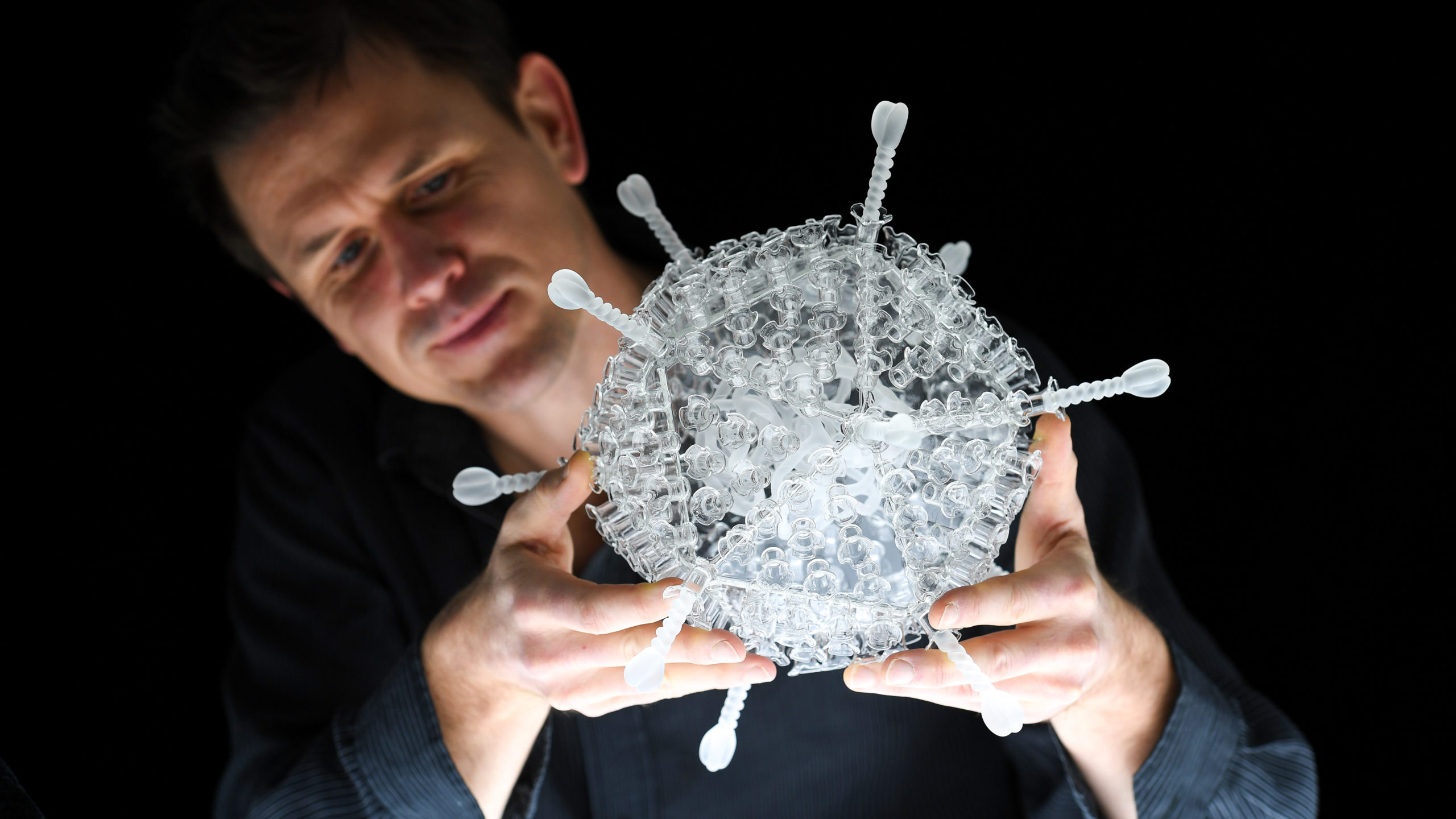
Making the sculpture was not a walk in the park, Jerram told Front Row. He collaborated with virologists and a team of glassblowers with experience in scientific glassware. The sculpture is made from borosilicate glass and is produced with the same materials and techniques used in medical scientific glassware, such as test tubes, and in distilleries.
The Oxford/AstraZeneca Vaccine Sculpture Next to a Sculpture of Covid-19
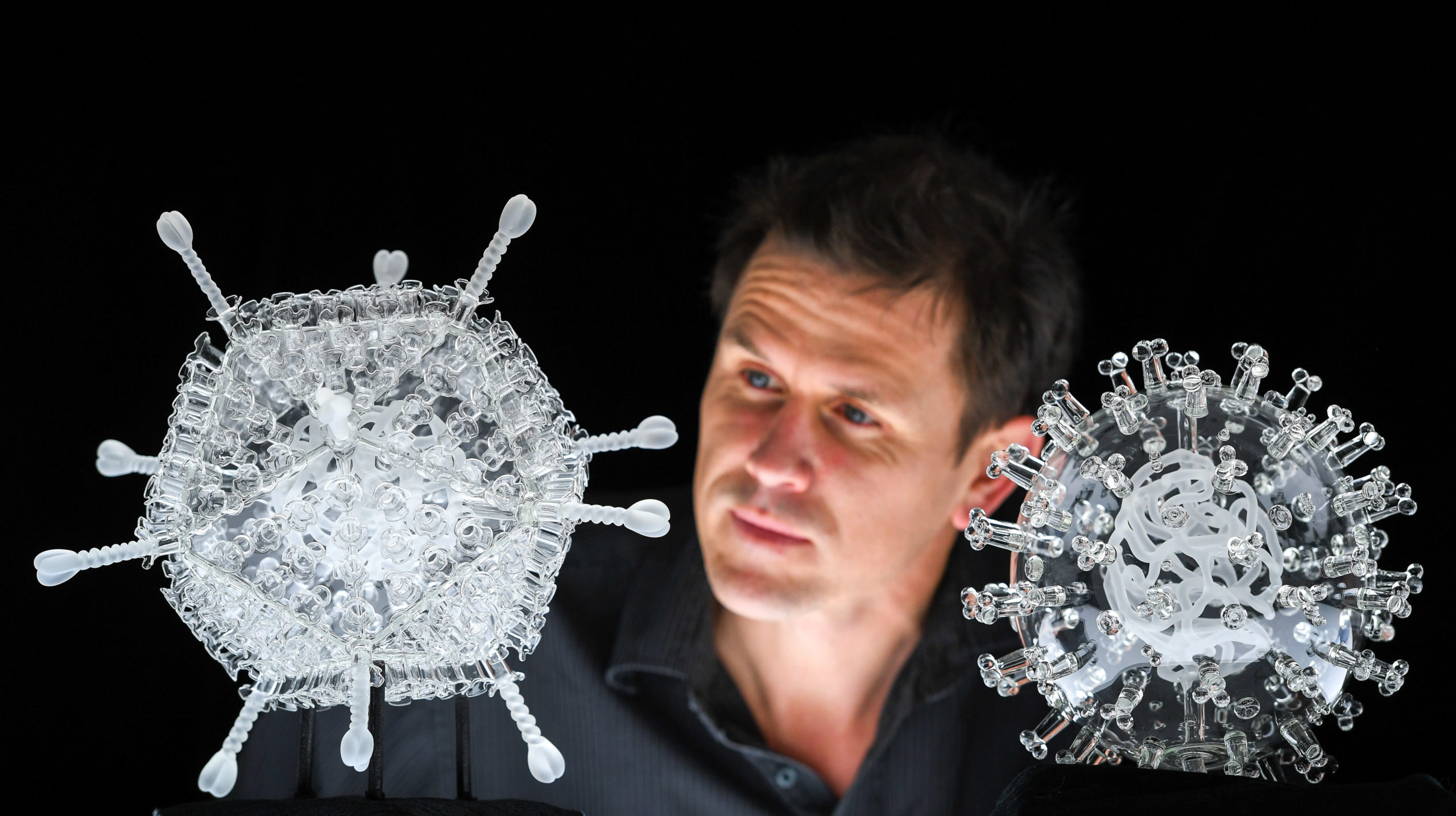
This isn’t the first time Jerram has made glass artwork related to the pandemic. In March of last year, he made a sculpture of the novel coronavirus, which causes covid-19. Both sculptures are a part of the series Glass Microbiology, which he’s been working on since 2004. The series aims to contemplate the global impact of each disease it represents.
“By extracting the colour from the imagery and creating jewel-like beautiful sculptures in glass, a complex tension has arisen between the artworks’ beauty and what they represent,” Jerram’s website states.
Depicting Viruses in Their Actual State
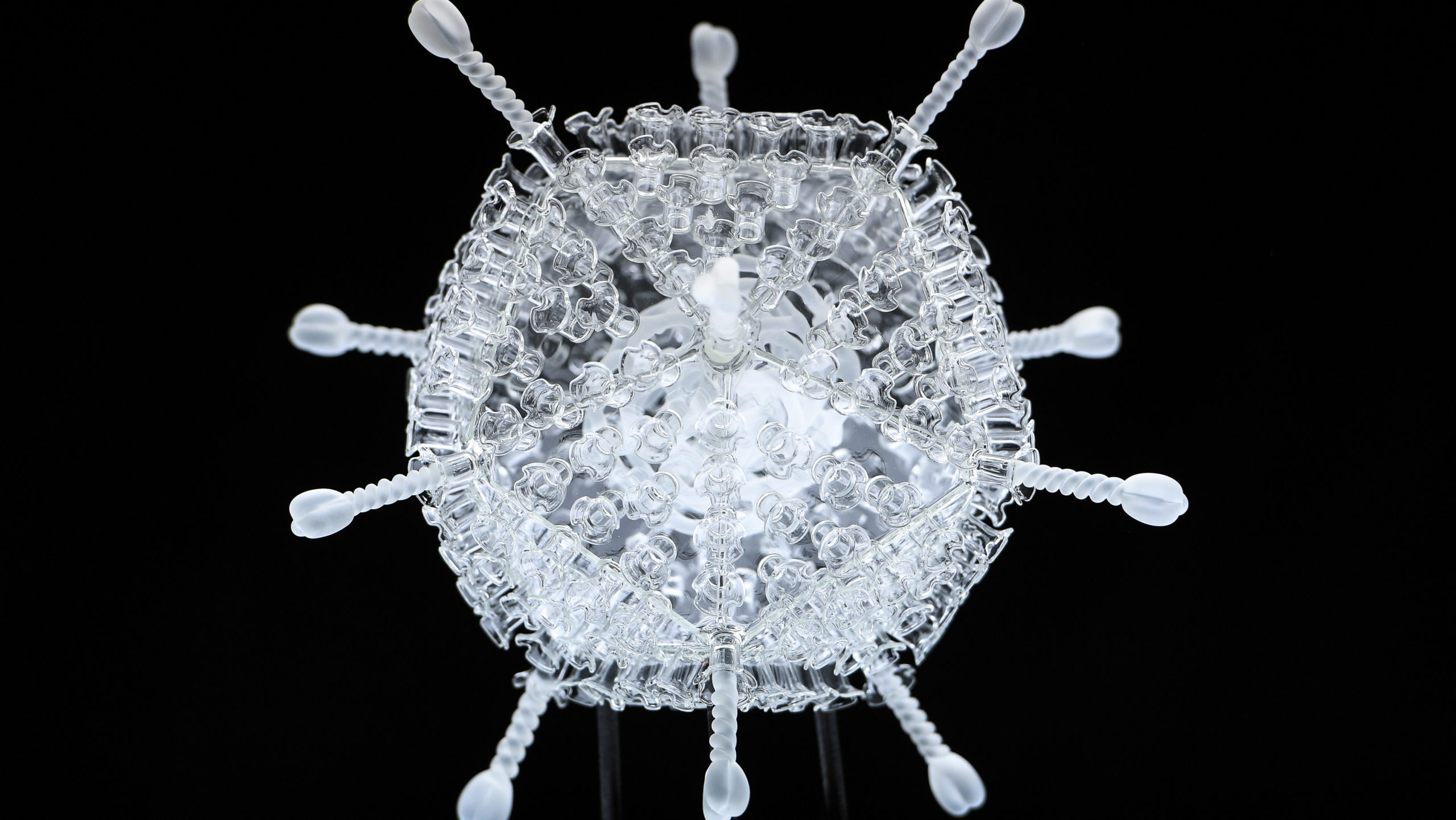
As for why his sculptures are made using colourless glass, Jerram points out that since viruses are smaller than a wavelength of light, they don’t really have colour. That knowledge inspired him to make transparent and colourless medical sculptures.
The artist said that photographs of his glass sculptures are even used by the scientific community in medical books and journals.
Proceeds From the Sale of the Sculptures Will Go to Charity

Jerram said that he will make five sculptures of the Oxford/AstraZeneca vaccine. All proceeds of the sale of these new pieces will go to Médecins Sans Frontières, or Doctors Without Borders, to help the organisation with its covid-19 response efforts.
Encouraging Others to Get Vaccinated
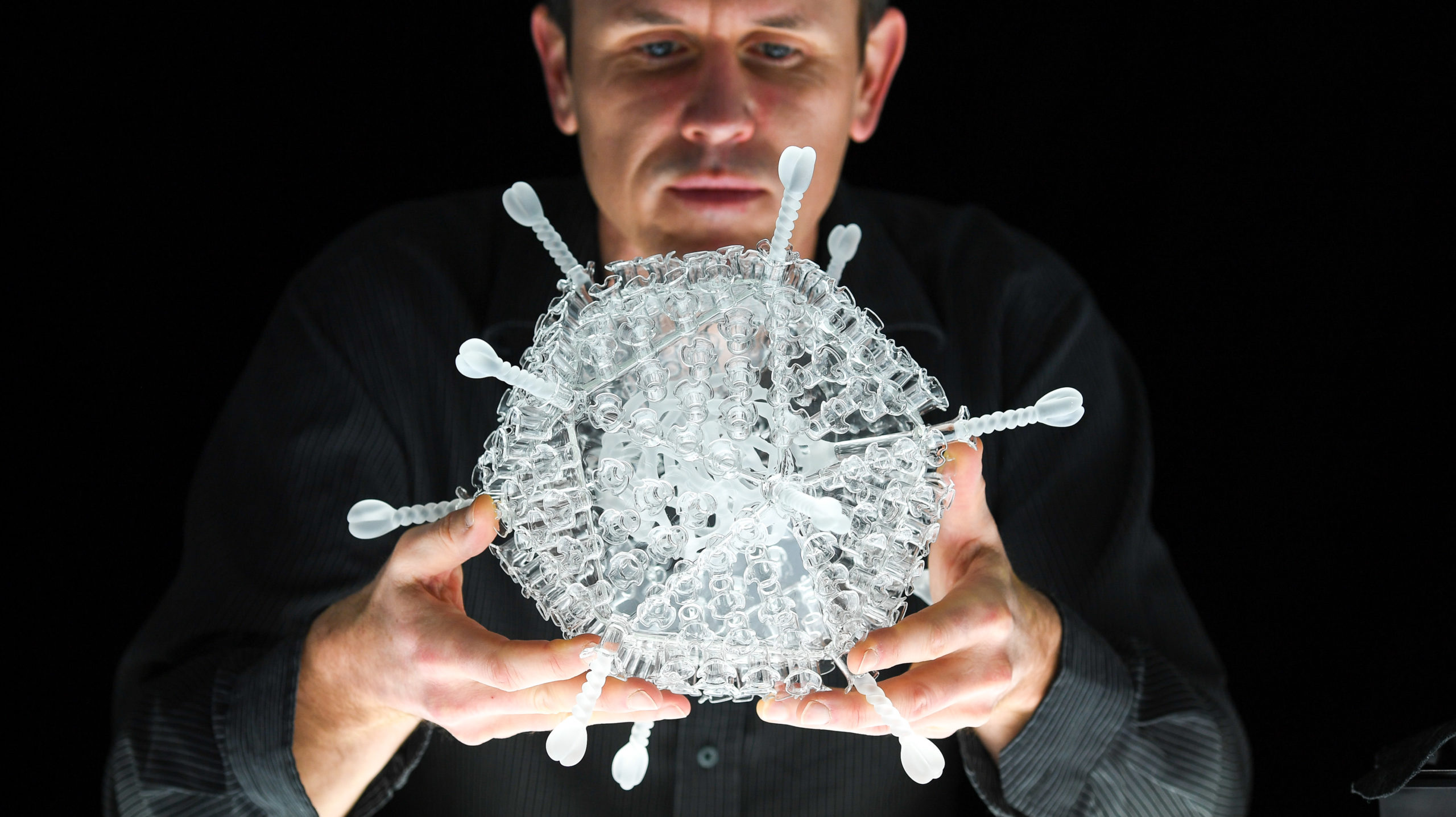
At the end of the day, Jerram is really pleased with his glass Oxford/AstraZeneca vaccine sculpture. It’s almost like a three-dimensional snowflake, he said, calling it absolutely beautiful. But the sculpture also serves another purpose.
“[I]t’s also about promoting the idea of getting vaccinated,” Jerram said.
